How can NY fix EMT shortages, worsened by COVID, that threaten emergency response times?
New York's shortage of emergency medical technicians had strained volunteer and professional ambulance corps for years, with long hours and low pay creating hurdles to recruitment and feeding staff turnover.
Then COVID-19 hit.
"The pandemic broke the camel's back," said Rockland Paramedic Services chief information officer Tim Egan. Across paid and volunteer agencies, COVID's emotional, physical, and health strains drained the EMT pool. "I don't think there's a single person in our organization that hasn't been touched by COVID."
Around the state, agencies and local governments are coming up with ways to boost recruitment. In Rockland County, a new program was announced last week that would help underemployed workers earn their EMT certification and secure a job with Rockland Paramedics.
But the underlying issue that has fed a shortage for years still needs to addressed, first responders say.
"Pay is a big problem," Egan said.
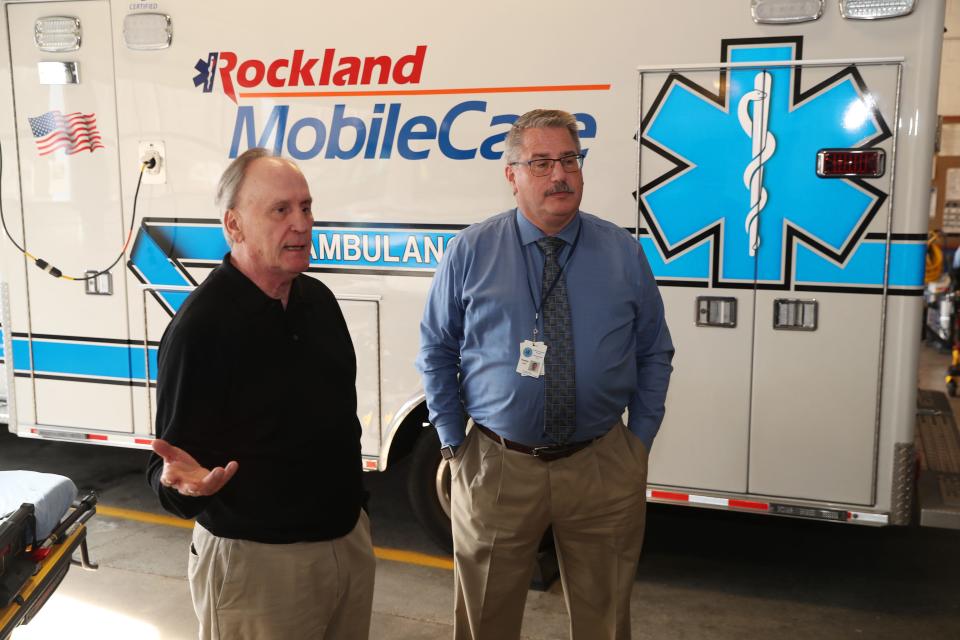
Still fighting COVID: New York's nurses have endured the unimaginable
9/11 illness: Nearly 20 years later, COVID brought new risks to first responders
Staffing crisis: Hochul deploying National Guard to aid nursing homes
The job pays close to minimum wage in many places. A recent job listing in Ticonderoga offered $20 an hour for a person with state EMT-Critical Care or Paramedic Certification; a job in Yonkers listed a similar wage. The starting salary for an FDNY EMT is $35,254.
"Historically, personnel in EMS have been underpaid," Rockland Paramedic Services Executive Director Raymond Florida said. "An EMT position is an entry-level position in health care."
Rockland Paramedics jobs pay near $20 an hour, when shift differentials are added in, Egan said.
Most EMTs cobble together part-time coverage for volunteer corps who need paid workers to fill day shifts. Jobs rarely come with health and retirement benefits.
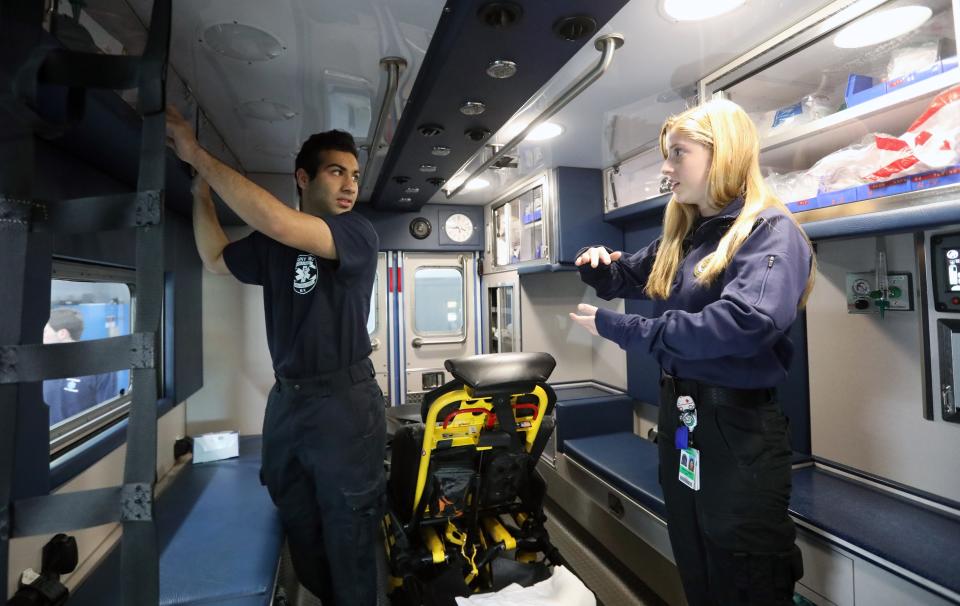
The American Ambulance Association, which creates a yearly survey, found in 2021 that wages and benefits remain the No. 1 cited reason that people leave their employer.
"What is happening today didn't just happen overnight," said Walter Dusseldorp, chairman of the Hudson Valley Paramedic Association.
Florida said the fix will involve more than just adding classes or even boosting pay.
He urged Gov. Kathy Hochul to draw attention to the shortage, just like she did this fall with a school bus driver shortage. "No one really knows what's going on."
Already 'distressed' workforce
Nearly half of EMS providers across the state were already warning of staff shortages jeopardizing response times in a 2019 study by the New York State Emergency Medical Council – and more than half of volunteer departments warned the same. Some 40% of respondents considered the EMS workforce “distressed.”
This was a year before anyone had heard of COVID-19.
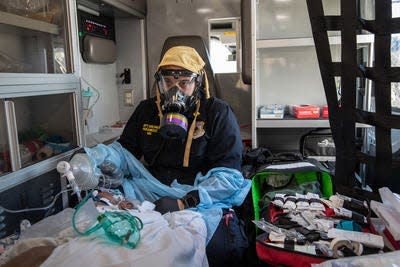
Staff churn has long been a challenge, for various reasons. Burnout was high in a field that is physically and emotionally taxing. But EMTs often gain training and become paramedics, or shift to the hospital setting as patient care associates. They use their experiences to pursue healthcare education.
The pandemic accelerated burnout.
Florida said there's no denying the emotional trauma for EMTs – they would go to calls and see someone who reported mild COVID symptoms, then get called back an hour later and find that person dead.
Well versed on proper infection protocols, they worried about exposing family to the virus or catching it. Many did. Some died.
The stress led volunteers and paid EMTs alike to leave the field. Even FDNY's EMT force saw an exodus.
“Our members are leaving in droves," said Oren Barzilay, who leads the union representing approximately 4,000 EMTs and paramedics. "It's just too risky."
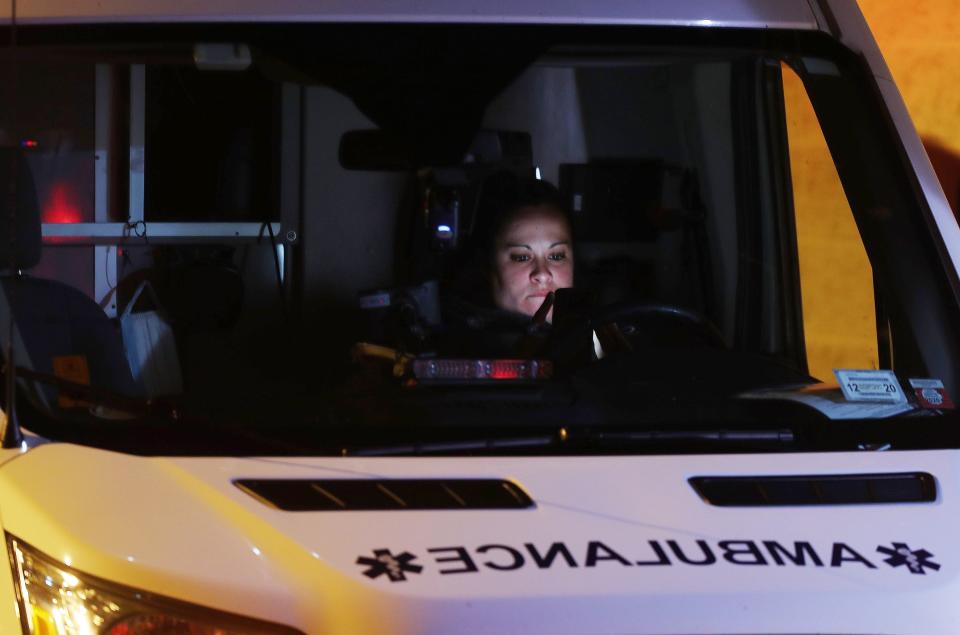
Meanwhile, the demands of the job grew as pandemic waves hit.
"We were doing more than twice the number of calls with the same number of staff," Egan said as the pandemic slammed the region in spring 2020. Every patient was considered a COVID patient. "We would don and doff PPE between calls, so it took longer for each call to do."
In Rockland County, which in spring 2020 had one of the fastest growing infection rates in the nation and then was hit with a second wave in fall, "the call volume just increased every single day."
Impact ripples through health care
Dusseldorp said the EMT role is undervalued despite its key role in the health care system. "They should be supported."
The shortage ripples through the system, Florida said.
If a local EMS can't help transport a hospital patient ready for discharge to a nursing home, rehab facility or home, that's a bed that won't be empty for an emergency room patient ready for admission.
And Dusseldorp, of the Hudson Valley Paramedic Association, said that paramedic programs, especially outside New York City, rely on EMTs to fill their paramedic jobs by gaining experience and training.
"The pipeline of EMTs is so small today," Dusseldorp said. "We face a significant deficit."
Egan agreed. "We're talking about a crisis in health care. When you call 911, response times are going to increase."
Montefiore Nyack Hospital CEO Dr. Mark Geller said EMTs can use their training and skills to help out hospitals.
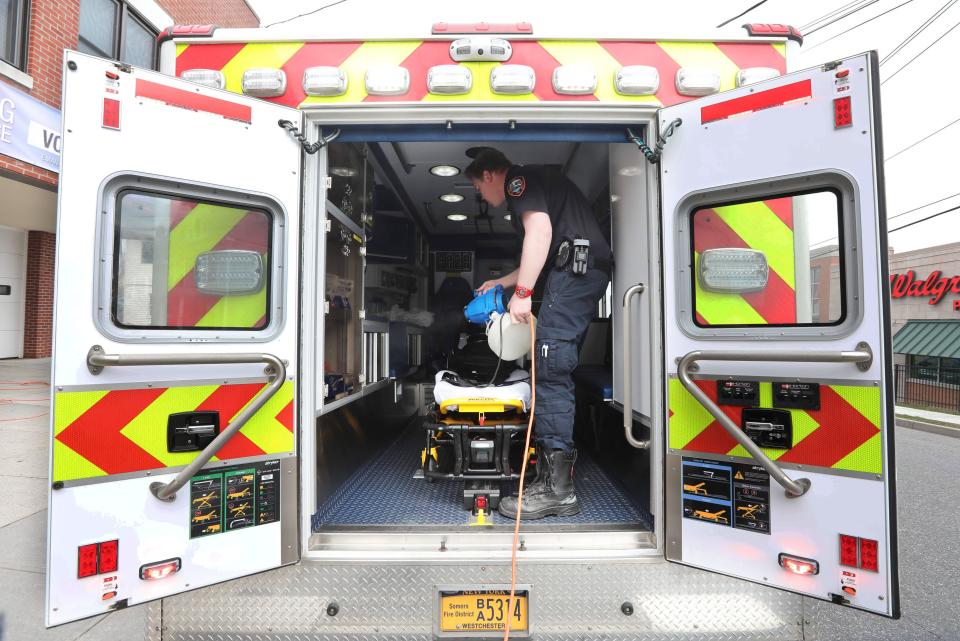
During the height of the pandemic, when hospitals were full and staff was tight, Geller said that paramedics could step in to relieve respiratory therapy shifts and EMTs could work at patient care associates. “There’s a lot of overlap,” Geller said.
EMTs can also use that training to advance their own careers.
“The Venn diagrams are complicated,” Geller said of healthcare training that can help lead to new occupations, “but there’s enormous potential.”
Training and pathway
In Rockland, the EMT and paramedic shortage spurred a partnership between county agencies, the professional paramedic service, local hospitals and the local community college.
SUNY Rockland Community College President Michael Baston announced a new career-path program that offers EMT certification and job placement. The first class launches in January.
"We're the instructors for it," Egan said.
The certification course will be full time, take three months, and put people quickly and directly into a job.
Lucy Redzoposki, Rockland County director of economic development and tourism, called the collaboration "absolute perfection."
The county's two primary-care hospitals – Good Samaritan and Montefiore Nyack – will provide medical training. Rockland WORKS, a job training and employer resource operated by Rockland BOCES and the Workforce Development Board of Rockland County are also partners. The cost of the certification course, about $7,000, can be covered by Workforce Innovation and Opportunity Act grants for those who qualify.

Similar programs are taking place in other parts of the state, Egan said, including in the greater Rochester and Finger Lakes regions.
For more information on the EMT training program, contact RCC at 845-574-4518 or email: workforce@sunyrockland.edu.
Nancy Cutler writes about People & Policy. Click here for her latest stories. Follow her on Twitter at @nancyrockland.
This article originally appeared on Rockland/Westchester Journal News: EMS staff shortages in New York worsened by COVID

